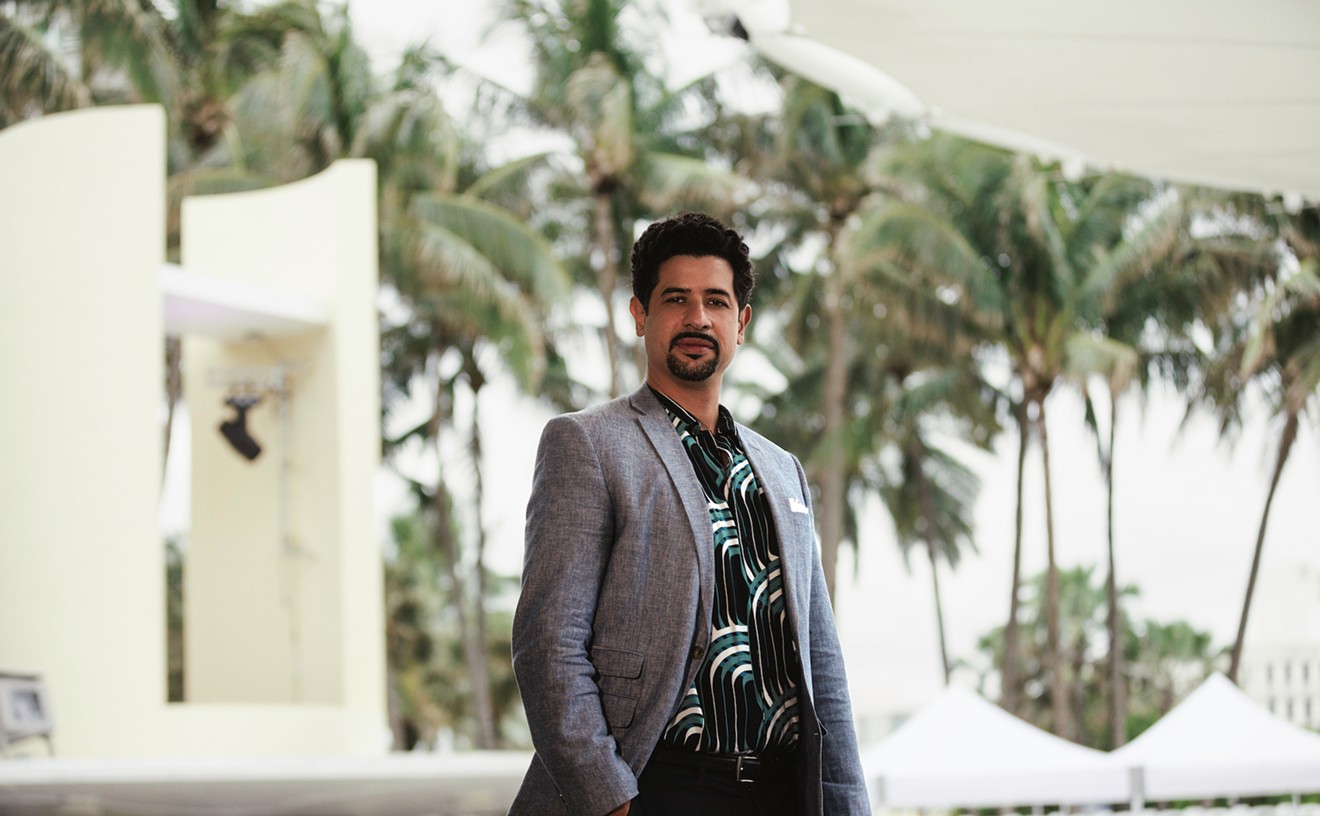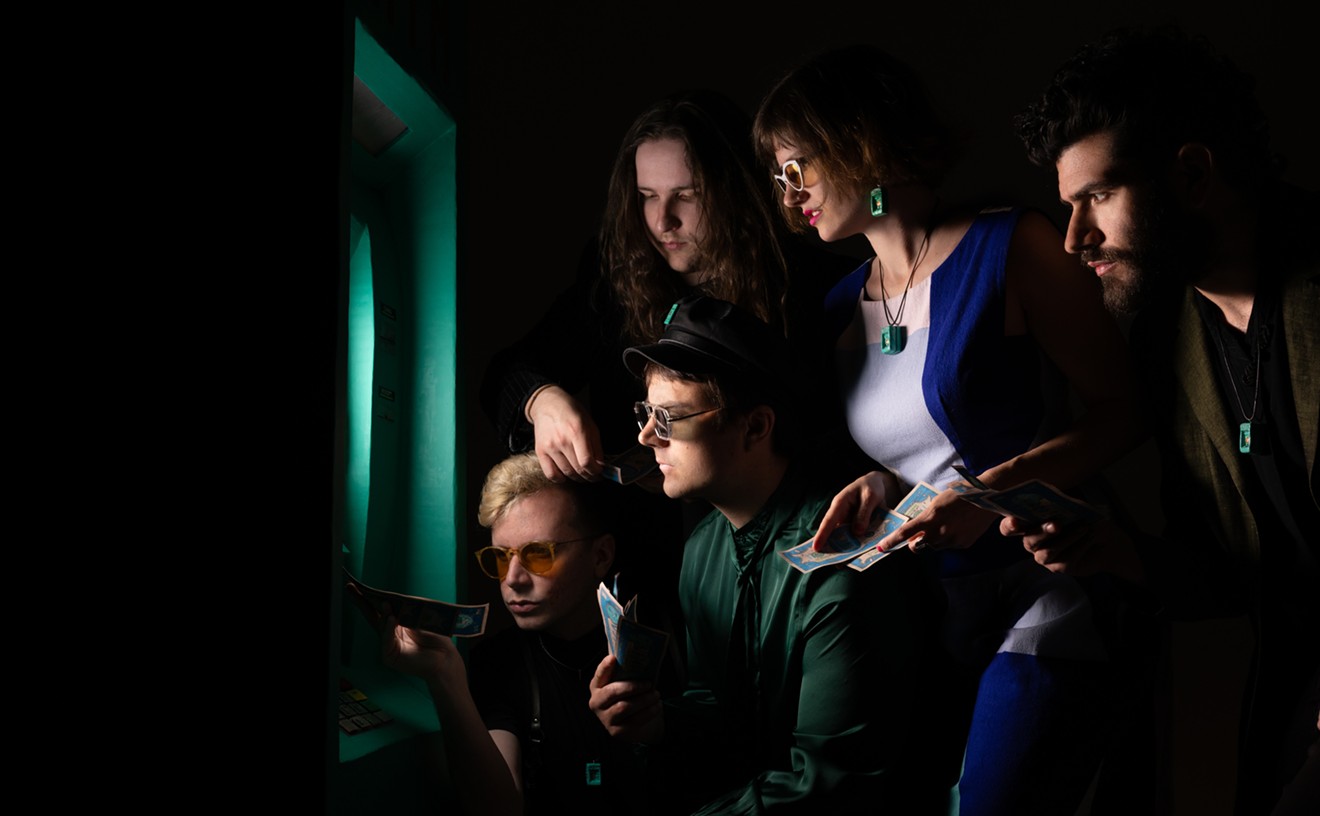Cuban troubadour and musicologist Gema Corredera, of the melodic duo Gema y Pavel, looks at home while sipping her espresso at El Pub on Calle Ocho. It's been eight months since she relocated from Madrid to Miami, and she feels increasingly hopeful about her future as a solo artist. But it's in the last place she ever expected.
"I came here in 1998 and thought, ¡Que va! I'll never live in this town. Ya tú sabes, once you've lived in Madrid...." she says, trailing off. "Then I came back in 2004, and I started to see it with new eyes. [Cuban singer/songwriter] Amaury Gutiérrez had relocated from Mexico; Descemer [Bueno, another Cuban-born musician] came down from New York. And I started to think, Wow, people are doing things here," she says. All three were fellow players on the Havana art scene during the tumultuous early Nineties.
Because of family ties in Madrid, Corredera's longtime musical counterpart, Pavel Urkiza, won't be joining the trend. But the two will reunite on a U.S. tour this year. And their first stop is a date for Global Cuba Fest, a local monthlong event sponsored by the nonprofit FUNDarte that features a myriad of modern Cuban fusion bands from all over the world.
Gema y Pavel were pioneers of the creative exile, being among the first of many Cuban artists of their generation to defect to Spain. In 1993, with money they saved from a tour with a theater group, they bought one-way tickets from Havana to Madrid. There they recorded their first album, Trampas del Tiempo, released on Spain's Nubenegra label.
A year later, they yearned to reunite with their old pals from Havana, so they returned home temporarily to record a local artists' compilation album known as Habana Oculta. It featured a combination of rock and son that packed a political punch against the establishment at a time when Cubans were leaving the island in boatloads. Two years later, record label BMG helped the duo send for more old compañeros to record with what has become the successful rocason collective Habana Abierta.
Since then, the duo has worked with more traditional artists such as Omara Portuondo, but Gema y Pavel are very much musicians in their own right. Apart from Trampas del Tiempo, they've released Cosa de Broma (1996), Síntomas de Fe (1999), and Art Bembé (2003), and sometime this year they'll hatch one more. True to their era, their music is a post-Cold War fusion rooted in their island upbringing and marked by the émigré experience.
Gema y Pavel began collaborating musically in 1990 at an open-mike night in the Havana home of legendary composer Marta Valdés. Listeners there started calling their sonic convergence neo-filin. It was a reference to the way the troubadours took the emotion of Cuba's post-bolero filin (feeling) movement of the Forties and Fifties and combined it with the poetry and provocative consciousness of the Nueva Trova popular from the Sixties through the Eighties.
In recent years, Gema y Pavel's sound has been dubbed filin progresivo, expressing the duo's evolution into genres like flamenco as well as East Indian and African music, sounds they picked up in Madrid's largely immigrant neighborhood Lavapiés. "I started to discover new codes, new fountains from which to drink, new colors — and I came to perceive music like painting — beyond the notes are the textures," Pavel Urkiza reflects in an e-mail from Spain's capital.
One of their first cultural experiences upon landing in the Old World took place at a flamenco festival in Andalusia. Gema says hearing the genre in its birthplace was so powerful that the music "went right into our veins." Adding flamenco to their eclectic repertoire helped bridge the gap with Spaniards accustomed to hearing Cubans perform straight salsa, bolero, and Nueva Trova. "We were really strange to them, yes we were!" says Gema, giggling.
It was also strangely scary trying to figure out how to make such a sound work in a capitalist market. "We had to win our frijoles through interaction with people who didn't always come into establishments with the idea of listening, and my generation didn't have that schooling in Cuba. The filin artists did. Theirs was more danceable, more festive," Pavel explains. "But the Nueva Trova was of a cultured artist who expected the public to sit and listen to what he was saying. It didn't matter if you sold albums or not."
Luckily globalization helped them sell without selling out. For instance, on Cosas de Fe, they rallied Spain's resident outsiders to make the sound even funkier. The group contained 40 musicians, including a tabla-playing Sri Lankan, a Venezuelan on the Amazonian flute, and an ensemble of Afro-Cuban drummers.
"We've always used the different elements and instruments to perform a very specific function," says Gema. A prime example is the song "Lavapiés." Named for the neighborhood, the song begins with a decidedly Cuban flavor but segues into Arabic sounds as Gema describes the different ethnic groups that enrich the neighborhood. Then handclapping falls into a familiar flamenco rhythm as Gema proclaims, "Cuba is far away from here."
Their music has gained a loyal following, especially among college students and Spanish artists. They've collaborated on albums and concerts with modern flamenco legend Ketama, popular folk rocker Pedro Guerra, and pop star Alejandro Sanz, and they were the first Latinos to perform at Germany's Frankfurt Opera House.
That might not have happened if the Buena Vista Social Club hadn't sparked a renewed interest in Cuban culture. "Spain, and I'd even say the world in general, has rediscovered the ABCs of Cuban music. To some degree, its roots have become a market-based cliché," reflects Pavel. But, he concedes, "this boom has given the old maestros a life they'd never been able to dream of."
Now that the old codgers have been recognized, the duo is thrilled to know Nineties-era colleagues are also getting their due. "Our generation really got harped on," Gema says. Her and her peers' childhood coincided with some of the revolution's most formidable years, and yet their young adulthood saw the economic horrors of the Special Period and the increased political repression that followed.
She glances around at the elder exiles that populate El Pub and whispers that her generation often feels misunderstood. "Oh, we studied all kinds of things in Cuba — scientific communism, philosophy, the law of dialectics," she recalls. "They taught us to think and to be cultured, but we couldn't put that thinking into practice." Then she straightens up and declares, "Lots of artists stayed there and learned to play the game for whatever human reason, but I tell you, there aren't any fools in my generation. I think that'll become obvious as we get older."










